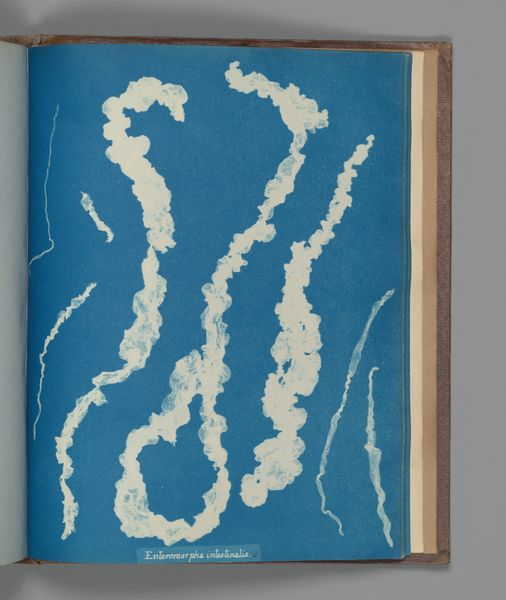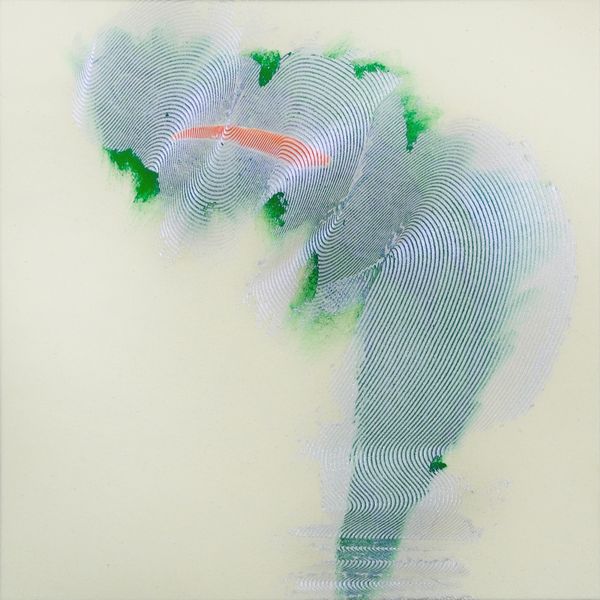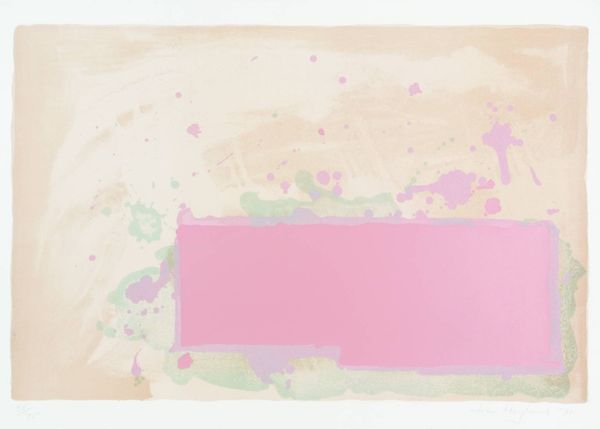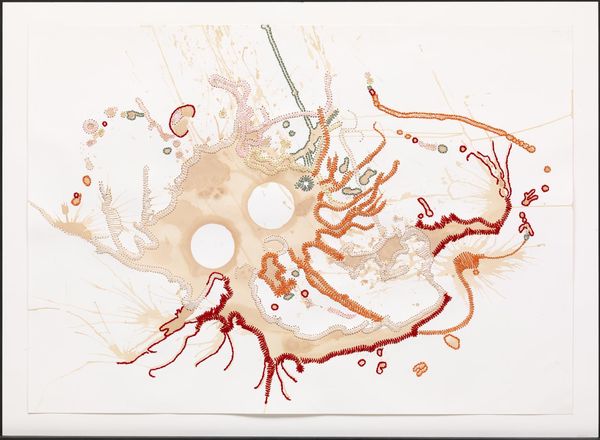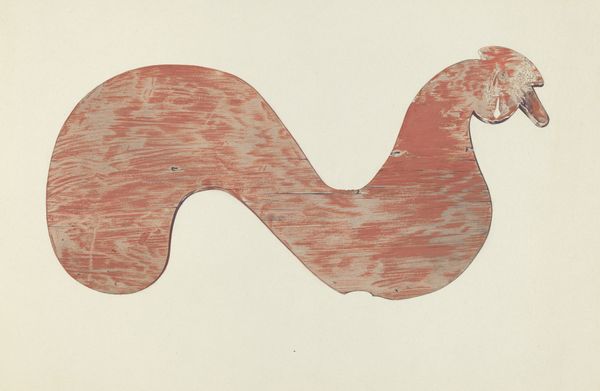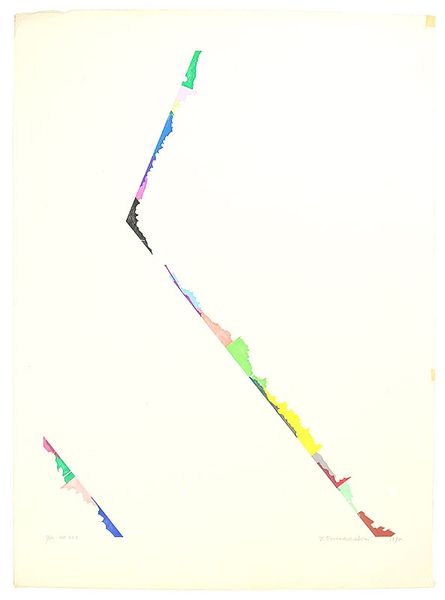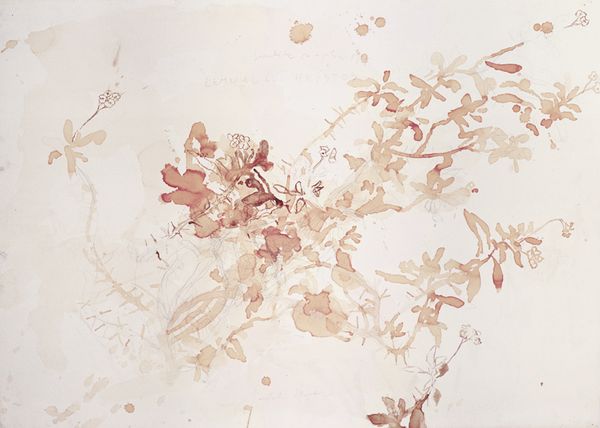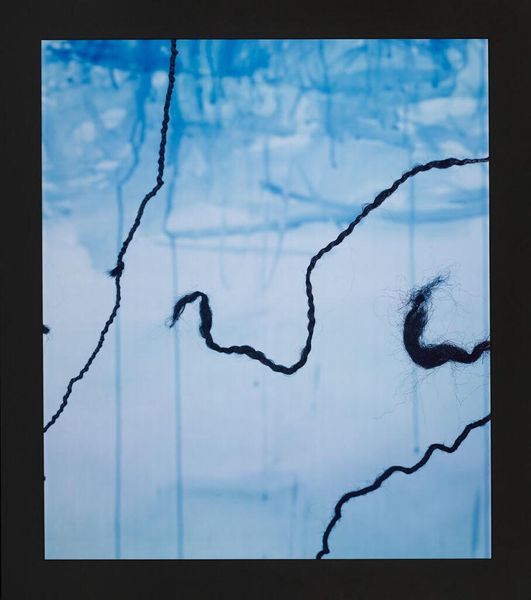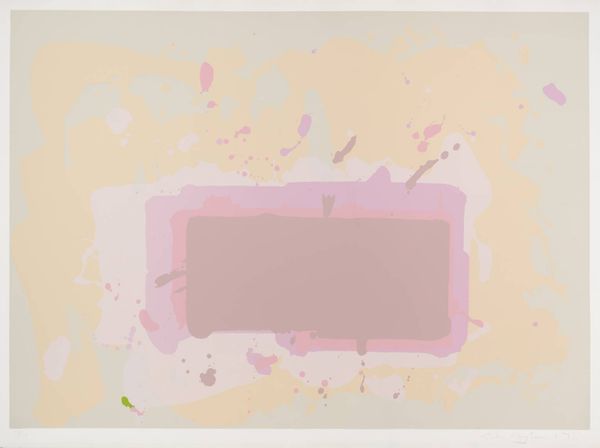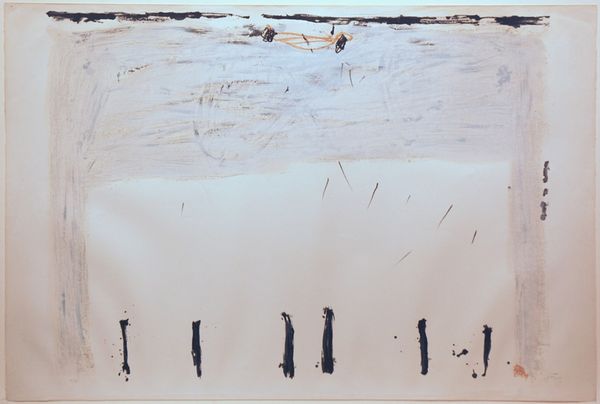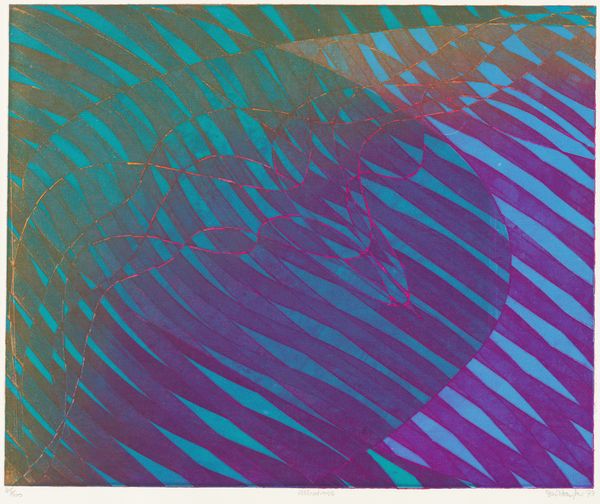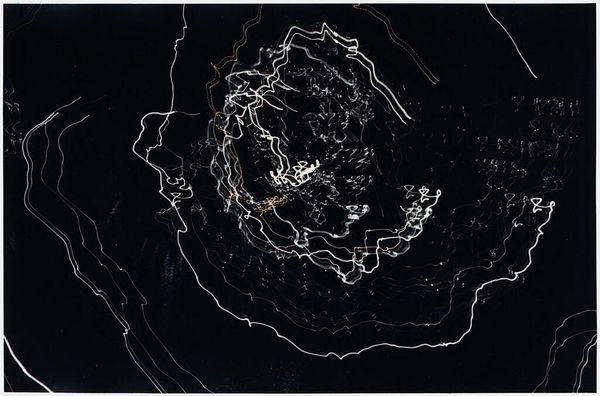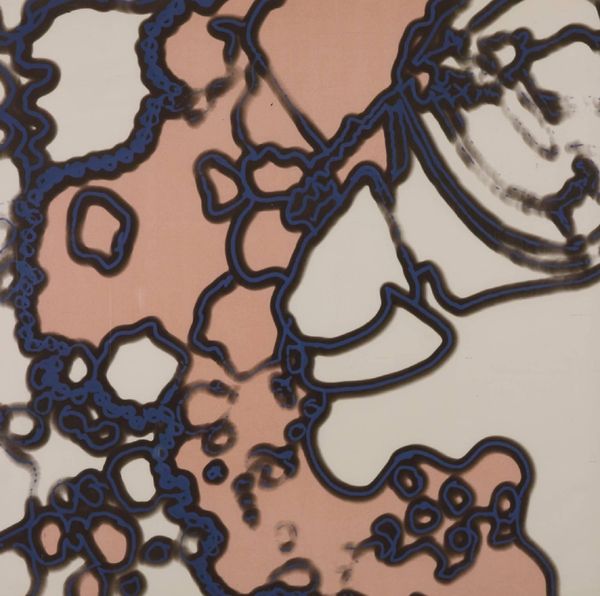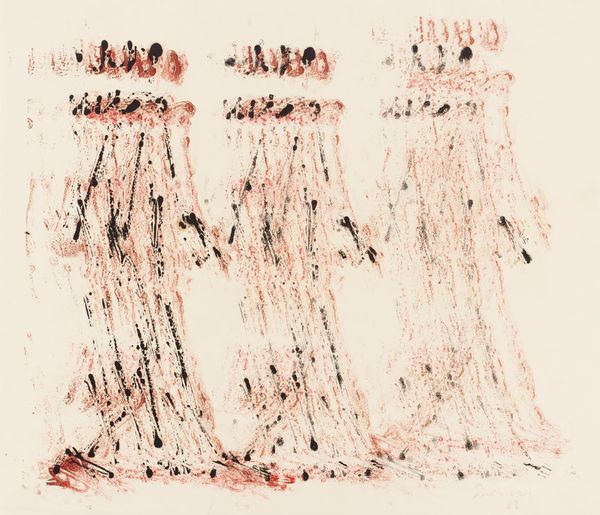
Dimensions: support: 770 x 1050 mm
Copyright: © Nicholas Hlobo, courtesy Stevenson Gallery, Cape Town | CC-BY-NC-ND 4.0 DEED, Photo: Tate
Editor: We're looking at Nicholas Hlobo's "Ikhonkco". It features some unexpected materials, and I can't help but see it as a visual representation of a network, fragile and interconnected. How do you interpret this work? Curator: Considering Hlobo's background, "Ikhonkco," meaning "connection" in Xhosa, speaks to the complexities of identity and cultural hybridity in post-apartheid South Africa. The use of materials like ribbon and rubber inner tubing might evoke ideas of femininity, while the chain-like form suggests restriction. How does the stark contrast between these materials and the white background inform your understanding? Editor: I hadn't thought about it that way, but now I see how those contrasting ideas could reflect the tensions and possibilities of a society in transition. Curator: Precisely. Hlobo invites us to consider how materials and forms can embody complex social and political narratives, challenging conventional notions of identity and belonging.
Comments
Join the conversation
Join millions of artists and users on Artera today and experience the ultimate creative platform.
tate 8 months ago
⋮
Ikhonkco 2010 is a work on paper created using ribbon and rubber. Light pink and off- white ribbon stitches form chain-like shapes in a diagonal line across the paper. At the end of the chain, in the upper left hand corner, a three-dimensional shape made from sections of paper protrudes from the edges of the sheet, partially enclosing a circle of perforations resembling a plughole. Further across, towards the middle of the page, a small piece of black rubber is enclosed by pink stitches at the end of a meandering line. In the artist’s native Xhosa language ‘Ikhonkco’ literally means a buckle from a belt, but it can also relate to a genealogical chain, or family tree. Hlobo has cut and sewn the paper together with his signature ‘baseball’ stitch, which is not just decorative, but also very strong. The cuts in the paper are sharp and clean, determining where the ribbon sutures will be made and how they will overlap.
